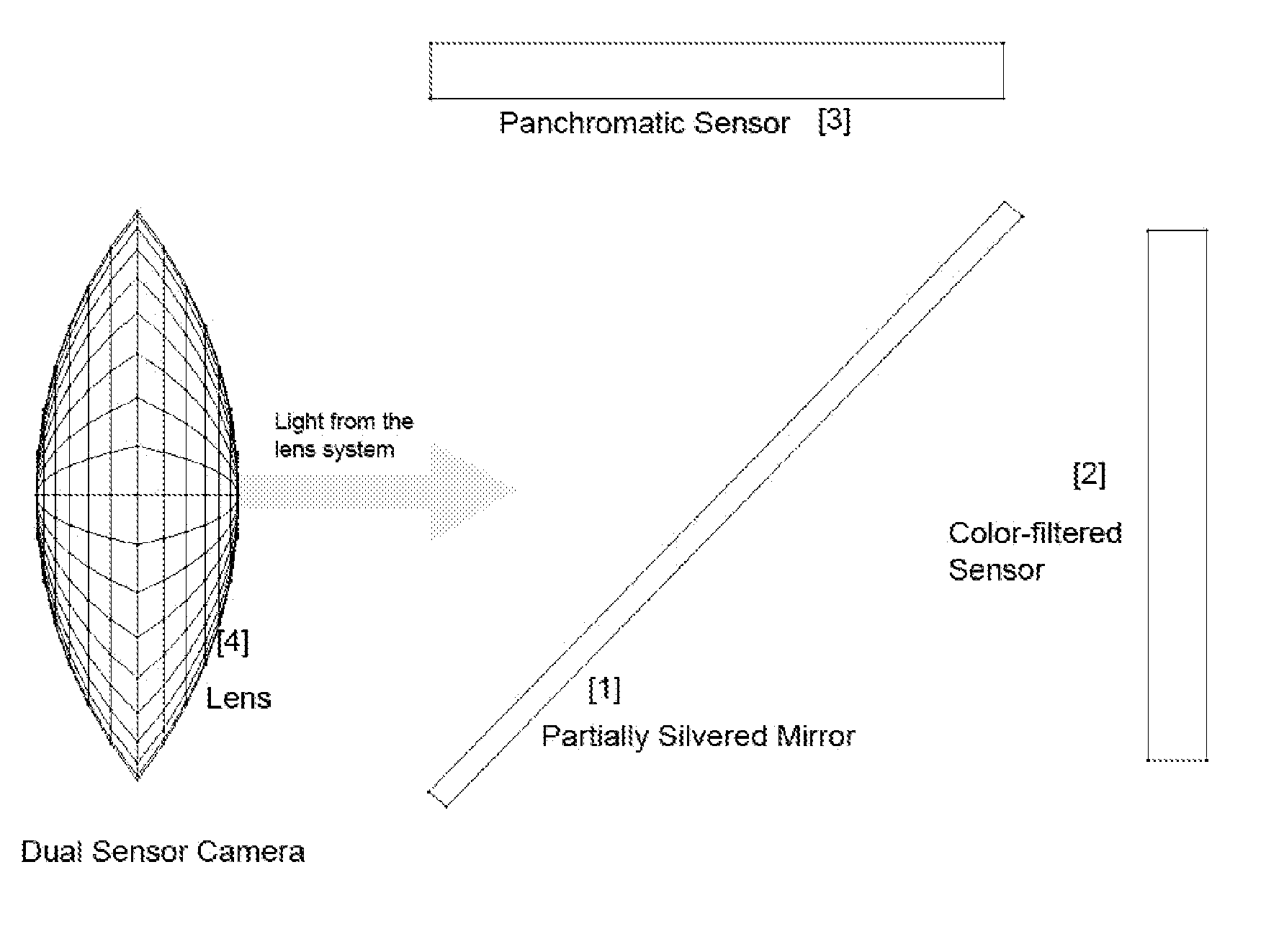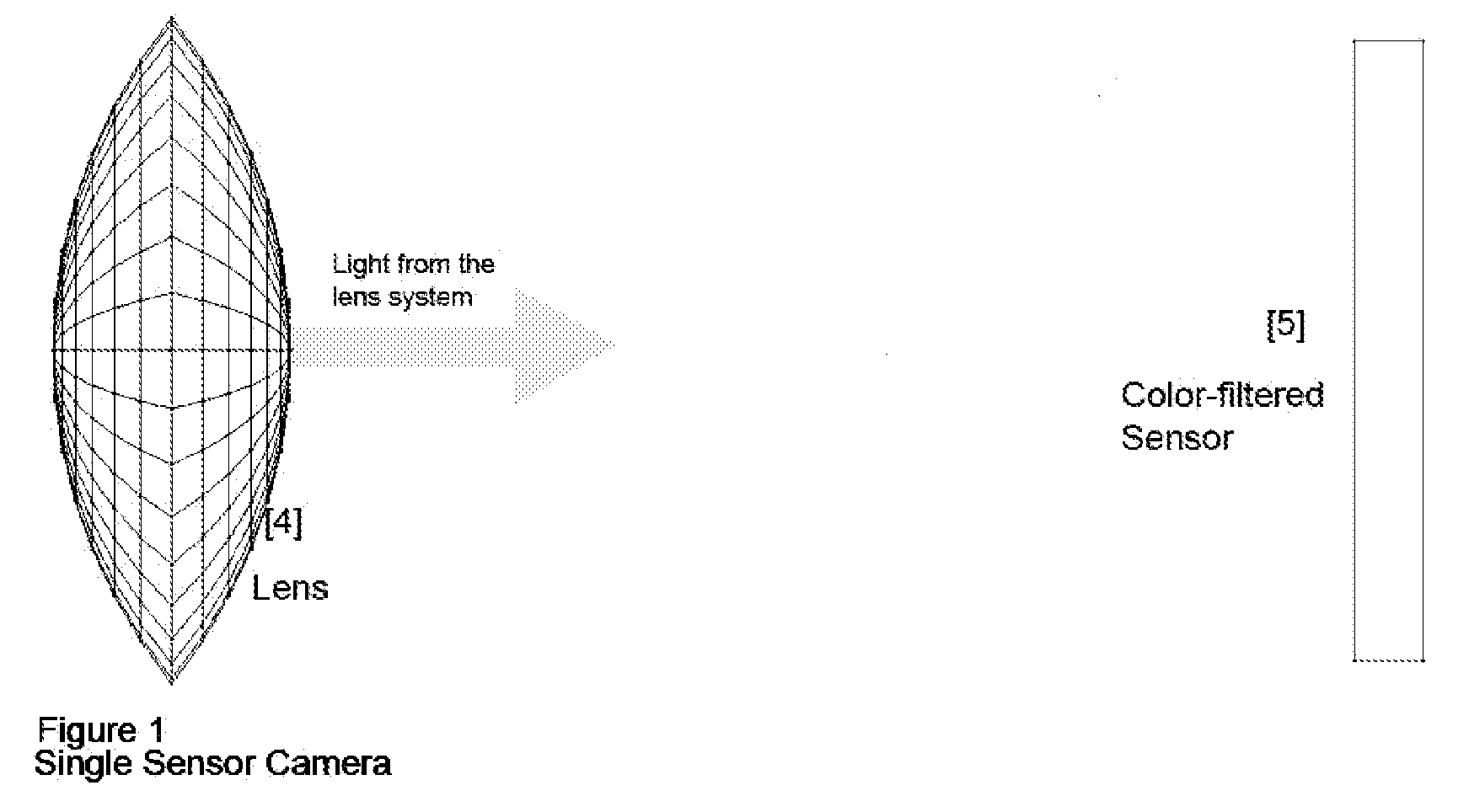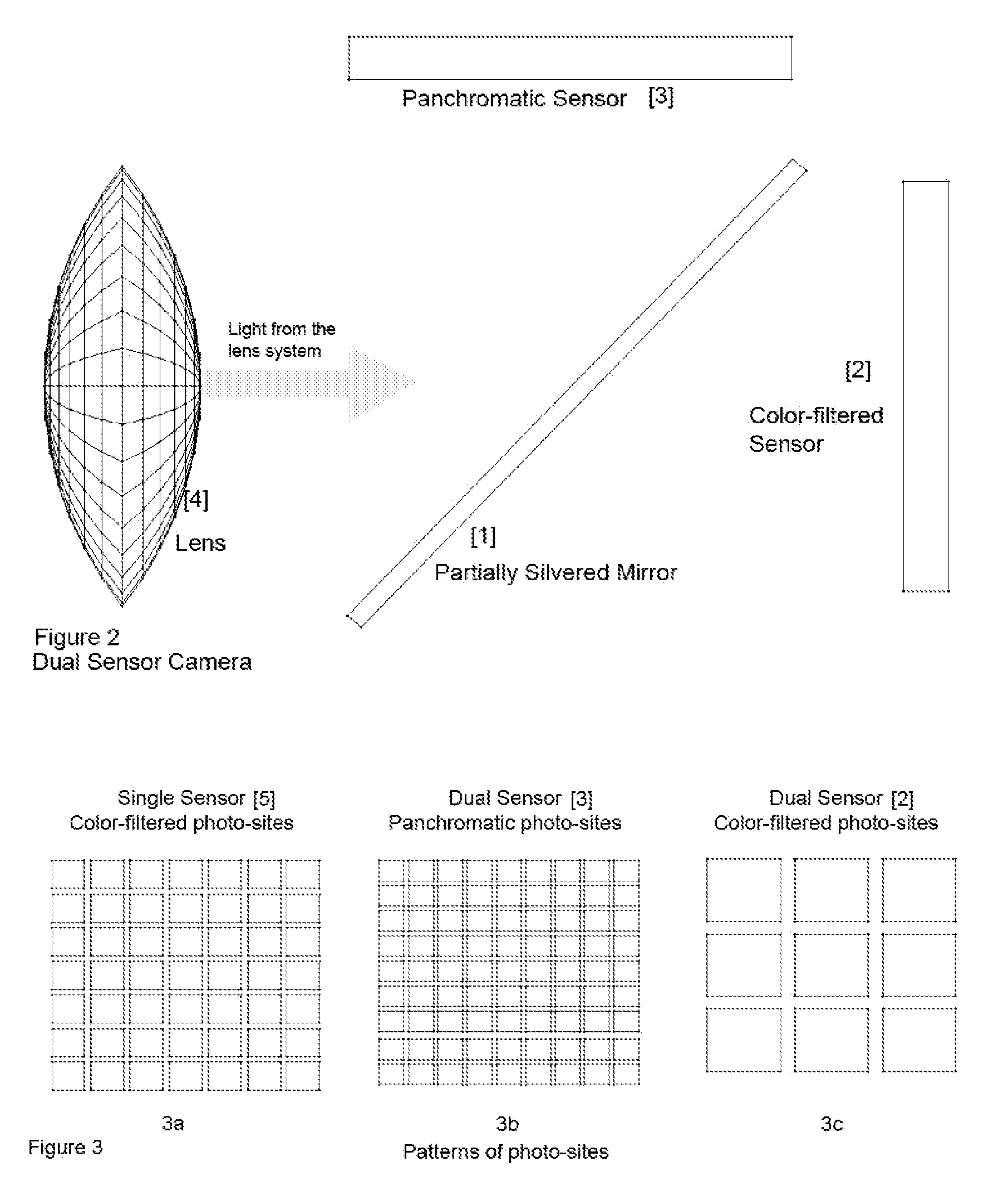Digital camera with asymmetrically configured sensors
a technology of symmetrical configuration and digital camera, which is applied in the direction of picture signal generators, solid-state device signal generators, television systems, etc., can solve the problems of loss of information contained in those photons arriving after the maximum number is reached, and other noise sources of photoreceptors, so as to reduce the loss of light, reduce the cost, and the effect of compactness
- Summary
- Abstract
- Description
- Claims
- Application Information
AI Technical Summary
Benefits of technology
Problems solved by technology
Method used
Image
Examples
embodiment example 1
Preferred Embodiment Example 1
[0074]In this example the configuration of the color sensor is partially determined by the desire to maintain compatibility with High Definition video. High Definition video is recorded in a pixel configuration of one thousand nine hundred and twenty by one thousand and eighty (1920×1080). This places a constraint on the configuration of the color sensor. An additional constraint is the desire to maintain compatibility with the photographic standard of a width to height ratio of four to three. It is therefore decided that the color sensor will have a configuration of one thousand nine hundred and twenty by one thousand four hundred and forty (1920×1440). Video images can be produced by mapping a subset of the color sensor's output using a one-to-one correspondence to the desired video output.
[0075]Mindful of these constraints, the following calculations are made.
Color sensor's number of photo-sites=(1920*1440)=2,764,800.
We now must select a conventional...
embodiment example 2
Preferred Embodiment Example 2
[0080]Begin with a 10 “megapixel” (million pixel, and also million photoreceptor), single sensor camera. The camera's sensor is replaced by dual asymmetrically configured sensors, as described by the current invention. Assume the following.[0081]E=4[0082]SA=1[0083]SP=1
Choose, in accordance with the rules of implementation of the current invention:
MA=1(MA>=1)
CA=8.138(CA / MA<=9)
ML=0.66(0.25ML<0.67 and [CP>=MP*3>=1], (2.76>=2.64>1))
[0084]The result is that the output of the camera is still 10 million pixels. However, there is some improvement in the resolution due to the effect of using 10 million panchromatic photoreceptors as opposed to 10 million color-filtered photoreceptors. The signal-to-noise ratio is more than doubled (2.66 times), as is the dynamic range. In photographic terms, this camera has a more than one stop advantage over the original camera, with enhanced resolution. Another advantage is that the color-filtered sensor is in a co...
PUM
 Login to View More
Login to View More Abstract
Description
Claims
Application Information
 Login to View More
Login to View More - R&D
- Intellectual Property
- Life Sciences
- Materials
- Tech Scout
- Unparalleled Data Quality
- Higher Quality Content
- 60% Fewer Hallucinations
Browse by: Latest US Patents, China's latest patents, Technical Efficacy Thesaurus, Application Domain, Technology Topic, Popular Technical Reports.
© 2025 PatSnap. All rights reserved.Legal|Privacy policy|Modern Slavery Act Transparency Statement|Sitemap|About US| Contact US: help@patsnap.com



